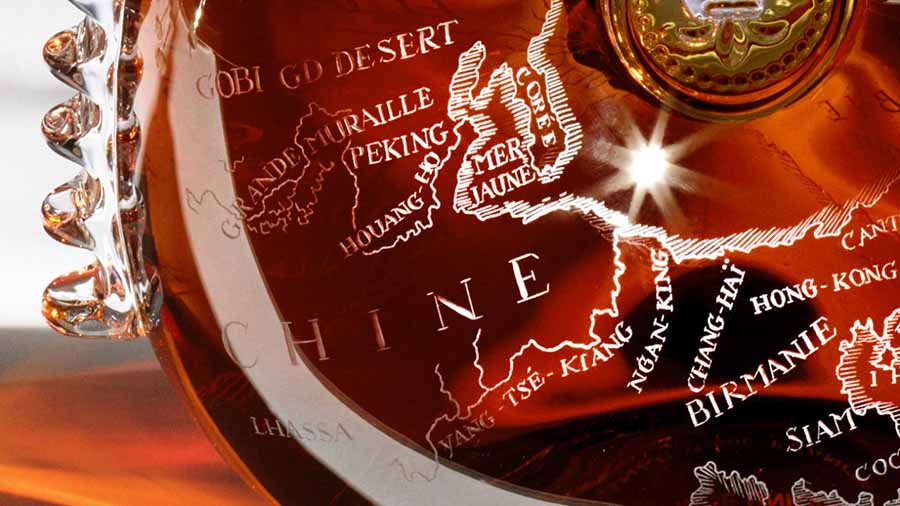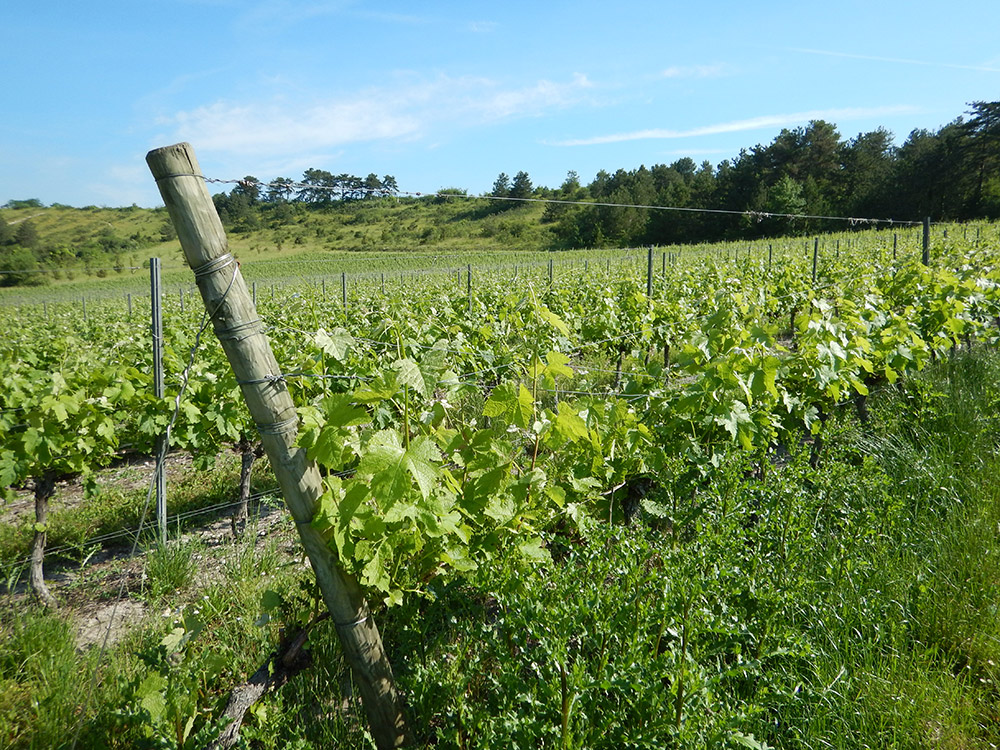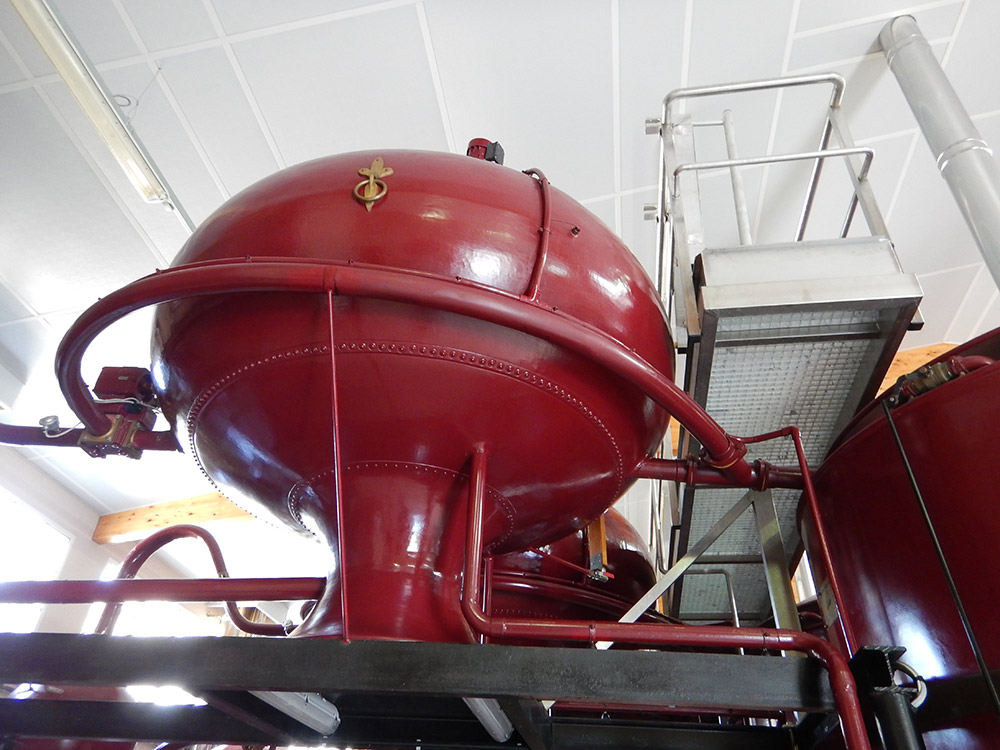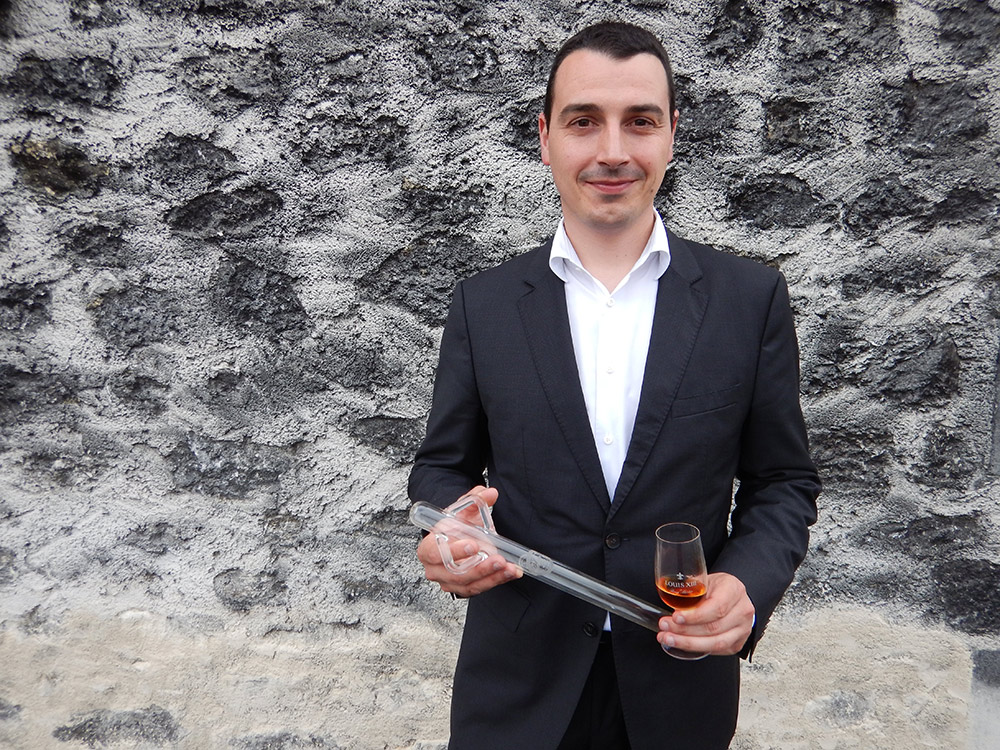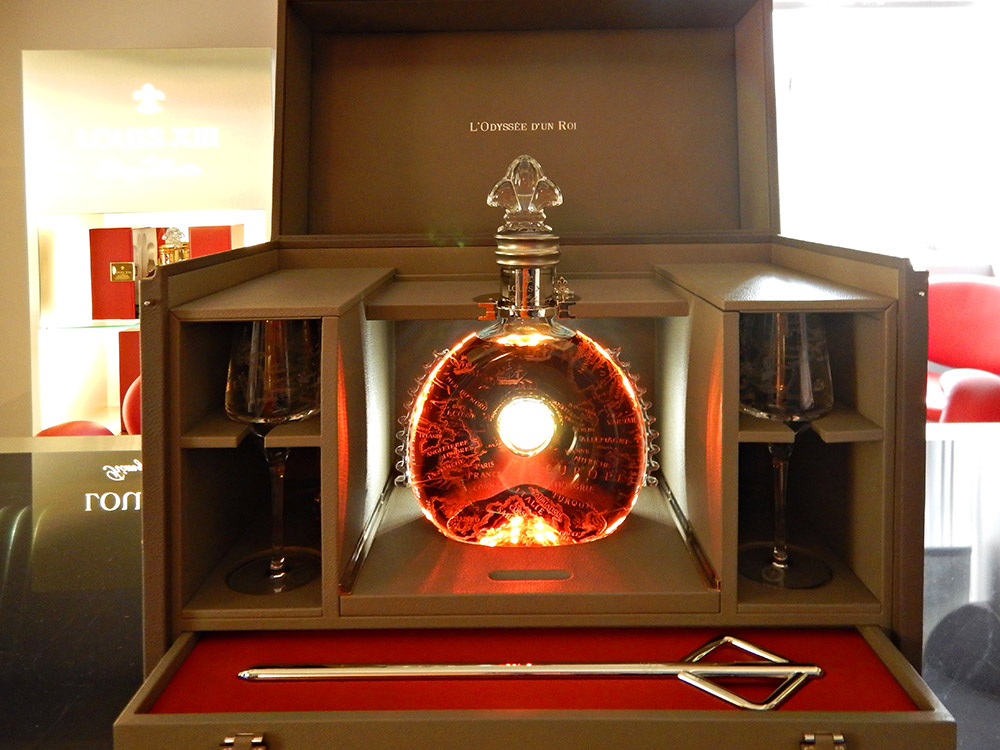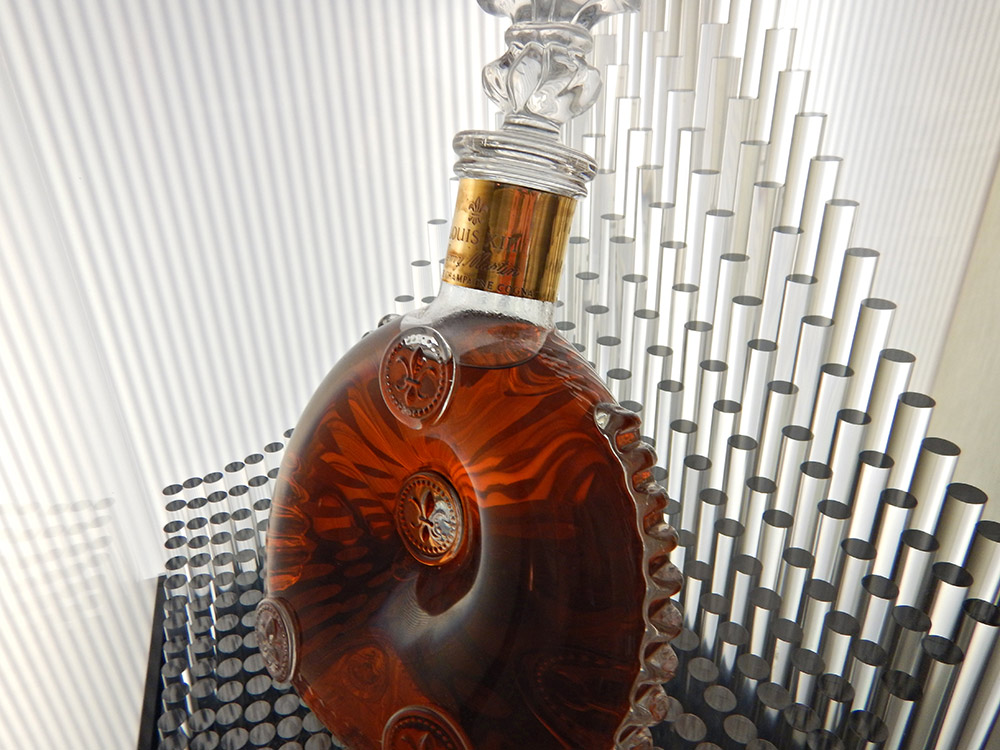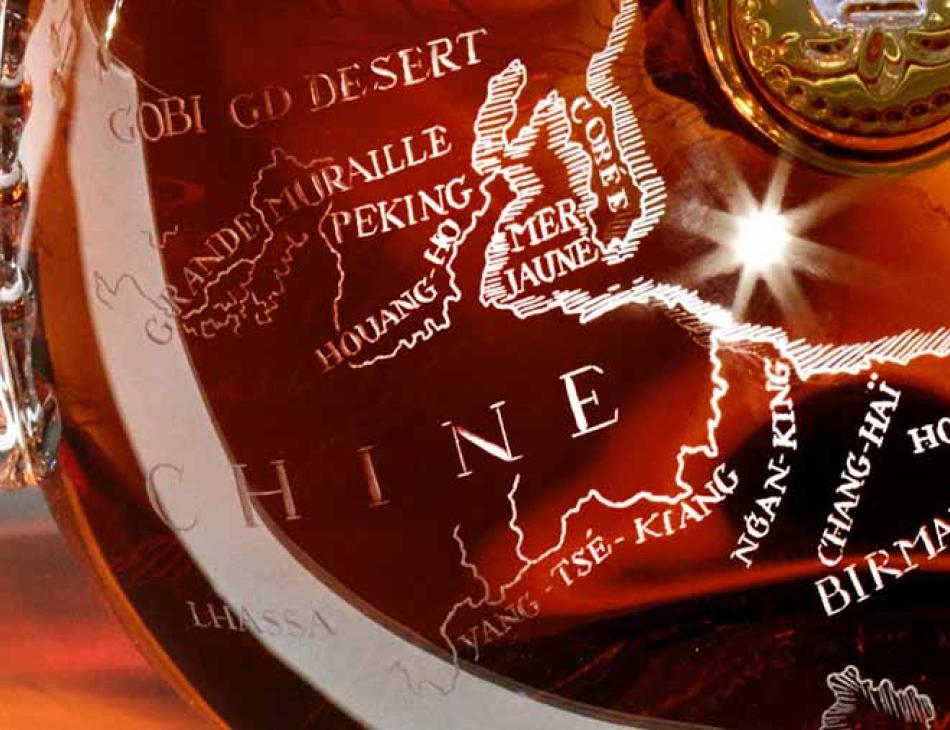Time Travel With Louis XIII Cognac & L’Odyssée d’un Roi
I have been a fan of good Cognac since I toured around France learning from some of the finest sommeliers to appreciate the different ages and blends. So I was delighted when Rémy Martin invited me out to visit their cellars for the launch of the new unremittingly exclusive L’Odyssée d’un Roi. Really, really, really exclusive as only three bottles have been produced! That’s one for each “really” in the last sentence, which if you judge a work by its rarity means this stands up there in the fine art category, with a price tag to match, all in support of Martin Scorcese’s Film Foundation!
I hopped on a quick flight to Bordeaux followed by a short drive through delightful Cognac. A picturesque French town with an idyllic square, lined with café’s and patisseries, a classic market full of local produce, the usual vast array of succulent cheeses, local wines and friendly village banter. I was staying at a lovely little auberge, Domaine de l’Echassier, which clearly catered to those seeking the holy grail of Cognacs as most of the furniture was made of oak barrels, with cellar themed interiors. It is a delightful place to stay, with a nice bar, pool and friendly service.
The next morning I was greeted by Remy Martin’s lovely brand ambassador, Chian-Mei Gan, and we headed over to one of the numerous vineyards dotted around this Grand Champaign region. Chian-Mei as you may have guessed from the name is Chinese, but you would be hard pressed to find a more passionate, knowledgeable and enthralling host to guide you through the pleasures of experiencing the French terroir. The word “terroir” means the combination of soil and climate which, in the Cognac region, is chalky and sunny, with just the right amount of rain to fatten the grapes. The chalk land is crumbly and holds the water like a sponge from winter into summer, perfect growing conditions. It also means that the entire region is stunningly beautiful, as most of it is covered in these vines undulating over the hills as far as the eye can see.
The best grapes for making the perfect eaux-de-vie are Ugni Blanc which grow well in this chalky soil. The vines need deep roots to draw the nutrients and water, endowing the grapes with better endurance, which contributes to the Louis XIII long finish. Over 1200 blends are used to get the right balance and 97% is Ugni Blanc grape, from 6 different groves from different terroirs. The vines flower in June, then the berries in July/August. The grapes are harvested at the end of September, mid October to get the right bitter juice. Interestingly enough new vines take three years to flower which is quite an investment of time and labour. The sour grapes are machine collected and no sulphurs are added to preserve as the white wine is already acidic, which adds to the quality.
We then stopped off at the distillery in Touzac to get an idea of the double distillation process. The wine used in the distillation is around 8-9% and three parts are extracted at each stage of the distillation, the head, the heart and the tail. The heart is the main ingredient, but a little of the head and tail are employed to add notes.The result of the first distillation called “Brouillis”, around 30% alcohol, is then distilled a second time ending up around 70%, now known as eaux-de-vie or water of life! 12 kilos of grapes are used to make 9 litres of wine which begets 1 litre of eaux-de-vie, so there is quite an attrition rate! They maintain an age old distillation tradition by using small copper pot stills for this process, which gives the best quality, employing only Lees distillation. Lees refers to the yeast left at the bottom of the tank after distillation which is then collected along with the wine. The Lees contain all the fatty acids and has the ageing potential which gives a longer finish. A great Cognac is defined by a long finish as well as its perfume, body, fruit and strength.
The young eaux-de-vie is placed in young oak wood barrels but the final Cognac blend is put in tierçon barrels of 100 to 150 years old, which are hand made here in the region. Rémy Martin has 6 properties in Grand Champagne (the finest region), but they pick only the very best from a thousand other growers and cooperatives in the Grande and Petit Champagne areas to go into the final Louis XIII. The eaux-de-vie from local growers blended in with theirs is chosen with a blind tasting by the cellar master and the suppliers are rewarded by quality. Three, five, and ten percent extra bonus. Only one percent will be of the ten percent quality and truly exceptional. The three percent is still super quality and all must come from the Champagne region. Over the last 150 years four generations of cellar masters have picked the different eaux-de-vie. After 100 years evaporation, the “Angels”, have taken two thirds of this highly expensive eaux-de-vie, but it is a small price to pay for beauty.
Interestingly enough many Irish and Scottish families came over to the Champagne region hundreds of years ago to found these family houses creating such fine eaux-de-vie. Also Louis XIII Cognac was so named after the French king because he officially recognised Cognac as category in its own right. The now famous Louis XIII decanter is based on a bottle found on a battlefield in Grollet around 1569. The “Bataille de Jarnac” took place three hundred years earlier between two French princes, which was famously bloody. Weirdly enough Sir Walter Raleigh took part as a volunteer on the Huguenot side!
The town of Cognac sits on the Charente river which is another reason for the success of the region, as the waterway was used to export the eaux-de-vie in barrels, east to the Atlantic coast, where it could be sold all over the world. The famous tierçon barrels were used in shipping and made of much thinner oak wood than today.
Following on from the distillery we stopped at one of the Rémy Martin cellars in Merpin where the barrels are carefully stored to age the eaux-de-vie. There are 29 such cellars that the new cellar master, Baptiste Loiseau, oversees having taken over in 2014 from his mentor, the previous master Pierrette Trichet. The cellars and buildings are blackened, covered in the fungus that feeds on eaux-de-vie vapour. The barrels are made of very expensive Limousin oak wood, hand crafted on site, which give the amber nectar its unique colour and perfume.
The eaux-de-vie placed in the young barrels is then moved on when judged ready to older barrels and then on again. The eau-de-vie will be moved many times to age it correctly, like cooking it in different pots over 150 years to get just the right flavours. Of course this process loses a lot to the Angels. Over 6000 barrels evaporate each year which represents an entire cellar’s worth. They must also account to the French authorities as to the amount lost, not least to satisfy the tax authorities that they are not selling more than registered.
The cellar master is responsible for producing the Cognac each year according to the traditional recipe, using the eaux-de-vie created by himself and the previous incumbents. Each new cellar master is also laying down eaux-de-vie for future generations and Baptiste acknowledges that it is quite a responsibility to get this right. The previous cellar master, Pierrette Trichet brought Baptiste in and eventually passed the mantle to him. George Clot preceded her, now 92 and still an exceptional raconteur, pitching in with advice and support for the new masters.
Baptiste Loiseau has learned to trust his intuition, as an expert wine maker he was used to a more scientific approach, employing statistics, but Pierette Trichet has taught him to also rely on his senses, instinct, even emotion when blending. Baptiste spent 7 years learning the art from his predecessor before they both felt confident enough for him to continue the legacy. Lesson one, the cellar master must respect the tradition of Louis XIII. Baptiste and Trichet had to discover each others language of aromas and memories to agree on the same vocabulary. Baptiste Laurent is a scientist who learnt to be an alchemist, a journey that many artists would understand. First learn the science of your craft, refining your skills until you trust your intuition and instinct turning the process into art. Baptiste Loiseau is passionate, enthusiastic, infinitely curious and takes great pleasure in his mastery, enjoying the process of creation. For him the best time to taste is late morning when your senses are at their sharpest.
In the blind tasting each year Baptiste has to select the eaux-de-vie for all the Remy Martin Cognacs. He is also looking out for the best that will become part of Louis XIII. If none of the eaux-de-vie are good enough then none will be chosen. 2011 turned out to be a bad year so he did not select any, but 2015 was a bumper year and some exceptional ones turned up.
Each barrel has a secret code that tells the cellar master the age or vintage, whether the blend is Grand Champagne or Petit Champagne. This code is passed on orally and was invented by the original Rémy Martin cellar master, André Renaud. This code is also a way of preserving the stocks so there is enough for each year. When the final blend is made during a tense two weeks, the cellar master must take the responsibility of removing a great eaux-de-vie from the cellar, fearful of depleting their future reserves. The final blend is decided in April to June with tastings in the summer and final decision in Sept/Oct.
The final cellar has three floors, each floor gets darker and mustier, as the blends are softened by the higher humidity, with great blackened mushrooms thickening as you go down. The second floor is like a dungeon with some special tierçons locked behind recessed cast iron gates for the family reserves. The barrels here a more than a century old. The level of alcohol also goes down with greater humidity, so they have to monitor them carefully to prevent them falling too much. The final blend is put in to the finest tierçon barrels for four years. So the cellar master has to wait a further four years before he sees them bottled.
A selection of the rarest and oldest eaux-de-vie are kept in different Dame Jeannes, which are large glass wicker covered flagons of 5 to 30 litres. Dame Jeanne is the origin of the word Demi-John. The Dame Jeannes are a small collection of each years vintage, not a blend, kept as a reference for the master distiller.
Baptiste now removes a pipette and we are offered a taste from the different Dame Jeannes, sampling over the ages, all over a hundred years old. Sipping liquid heaven laid down before cars, planes and modern technology were widespread. The oldest eaux-de-vie would be early 19th century! These Dame Jeannes are guides to make the blend, sampling unique choices made by the different cellars masters long since dead. History you can smell, feel, taste and imbibe! In this darkened, musty, black, brown cellar all colour is muted, like an old sepia movie. The smell of the earth pervades all, underpinning the scent of this abacus Cognac made to measure time. Fruity notes; figs, dates, aromas of tobacco, vanilla, spices. Sweet, buttery, soft liqueur that spills, evaporates and sparks on the tongue. Almond, lichees, mint, tropical fruit, dried roses, pine and hot sand!
It is a heady experience heightened by low light and a grand sense of history and location, the cellar masters who passed before, skills refined, arts employed, so much preparation for this fleeting moment, travelling in time across centuries of stories, the rise and fall of empires, generations of families refining their craft over so many years to produce this electric current over the palate. The aromas pass into the nose, rising up to the head, a red flush as the evaporations flow into the brain, warming, reassuring and dreamlike in this centuries old time machine.
Finally that evening we dined sumptuously at the Domaine du Grollet in the family distillery/dining room before crossing the courtyard to the VIP cellar, the culmination of this Cognac experience. It is the quintessential cellar, with barely any lights, spider webs abound and the barrels lie on wood supports directly on packed mud, laden with black fungus. The small bung on top peaks out of the sack cloth seal of each oak wood fine grain sculpture. The smell is prehistoric, of terroir and grape, ethanol and must, pine and earth, vines and chalk. It was a place of alchemy and we were about to be given some of the magic potion.
Asterix and Obelix had to test many barrels to see which one held the true magic potion, but here every barrel contained the flawless amber liquid, it was like being in a Fort Knox of Cognac, only the purest gold was stored here. I watched silently as the giant glass pipette dipped into the VIP barrel used for these special tastings and was ever so slowly withdrawn. The crystal cylinder emerged and the liquid with it, flame and amber, glistening like dark gold. Carefully the potion was released into a cellar masters glass and reverently passed. I held the glass at arms length, allowing the aroma to float gently towards me, slowly savouring the arrival of the fruity, floral notes, marvelling at the colour and depth, before sipping gently, whilst absorbing the atmosphere, drinking my first magic elixir. The light glinting through the auburn, russet, fire tint tones of this volcanic liquid. The subtle tang of Louis XIII will now forever take me back to a cellar of a Chateau in Bordeaux, transported back to that moment in this ancient family cellar of mushroom blacked oak wood barrels, each with its wooden bung and cast iron circlet. Travelling by time machine as the Cognac vapours warms my palate, slowly savouring the smells and flavours and marvelling at the centuries that produced them. The colours of the nectar in perfect harmony with the surroundings, a reflection of the memory of past cellar masters, standing on the bare earth, amidst breathing wooden hulks, dark, shadowy grey cobwebs and low, warm flickering light.
I briefly imagined, like Asterix, grabbing a barrel and rolling it out the door and down the tree lined Chateau road, so that I would have this magic potion forever. I may have hugged a barrel, Obelix would have approved, enjoying the texture and grain of this ancient wood and fixing the smoky aroma in my mind. Emotional, perhaps, but I can feel that memory now as I write this and it gleams in my mind like a golden orb. That cellar is mine now, cast in memory as strong as those iron circlets and I can revisit it any time I like with a sip of Louis XIII.
L’Odyssée d'un Roi:
So now we come to the truly unique, L’Odyssée d'un Roi is rare one off blend of Louis XIII Cognac. Only three decanters of L’Odyssée d’un Roi have been produced, that’s like Bugatti saying they are only going to make three Chirons, except the ingredients are limited by their production over 100 years ago! I imagine the competition over these will ensure they fetch a great price for the Film Foundation at auction. Over 50 artisans have devoted more than 1000 hours to produce these bespoke creations. As Baptiste says:
“This is truly exceptional, unique and rare, as you can copy anything except time.”
These three masterpieces will be sold by Sotherby’s in three major cities, London, New York and Hong Kong at a reserve price of 100,000 Euros each. The bespoke hand stitched trunk is made by Hermés, the mouth blown, hand engraved, crystal decanter and four serving glasses by Saint-Louis and the pipette of solid white gold was forged by silversmith Puiforcat. Each decanter is etched with a 19th-century map of the continent where it is bound. The bottom draw of the trunk contains a history book of Louis XIII’s mythical journeys, completing these unique objets d’art. This will be the ultimate expression of the oldest and finest treasures of the Rémy Matin Grand Champagne cellars.
The big question is whether the buyer should drink it or not, keep as an incredible piece of history or savour it? Whilst it will of course keep longer than we will, Baptiste Loiseau is adamant it should be enjoyed to its full with great friends, perhaps on a wonderful journey somewhere!
Louis XIII Cognac: http://www.louisXIII-Cognac.com/
L’Odyssée d'un Roi: http://www.louisxiii-cognac.com/en-all/#l-odyssee-d-un-roi--discover

